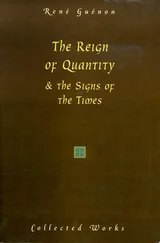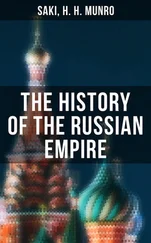March , 1841.
Table of Contents
SECTION I.
VIEW OF THE CASTILIAN MONARCHY BEFORE THE FIFTEENTH CENTURY.
Early History and Constitution of Castile.—Invasion of the Arabs.—Slow Reconquest of the Country.—Religious Enthusiasm of the Spaniards.— Influence of their Minstrelsy.—Their Chivalry.—Castilian Towns.— Cortes.—Its Powers.—Its Boldness.—Wealth of the Cities.—The Nobility. —Their Privileges and Wealth.—Knights.—Clergy.—Poverty of the Crown.—
Limited Extent of the Prerogative.
For several hundred years after the great Saracen invasion in the beginning of the eighth century, Spain was broken up into a number of small but independent states, divided in their interests, and often in deadly hostility with one another. It was inhabited by races, the most dissimilar in their origin, religion, and government, the least important of which has exerted a sensible influence on the character and institutions of its present inhabitants. At the close of the fifteenth century, these various races were blended into one great nation, under one common rule. Its territorial limits were widely extended by discovery and conquest. Its domestic institutions, and even its literature, were moulded into the form, which, to a considerable extent, they have maintained to the present day. It is the object of the present narrative to exhibit the period in which these momentous results were effected—the reign of Ferdinand and Isabella.
By the middle of the fifteenth century, the number of states, into which the country had been divided, was reduced to four; Castile, Aragon, Navarre, and the Moorish kingdom of Granada. The last, comprised within nearly the same limits as the modern province of that name, was all that remained to the Moslems of their once vast possessions in the Peninsula. Its concentrated population gave it a degree of strength altogether disproportioned to the extent of its territory; and the profuse magnificence of its court, which rivalled that of the ancient caliphs, was supported by the labors of a sober, industrious people, under whom agriculture and several of the mechanic arts had reached a degree of excellence, probably unequalled in any other part of Europe during the Middle Ages.
The little kingdom of Navarre, embosomed within the Pyrenees, had often attracted the avarice of neighboring and more powerful states. But, since their selfish schemes operated as a mutual check upon each other, Navarre still continued to maintain her independence, when all the smaller states in the Peninsula had been absorbed in the gradually increasing dominion of Castile and Aragon.
This latter kingdom comprehended the province of that name, together with Catalonia and Valencia. Under its auspicious climate and free political institutions, its inhabitants displayed an uncommon share of intellectual and moral energy. Its long line of coast opened the way to an extensive and flourishing commerce; and its enterprising navy indemnified the nation for the scantiness of its territory at home, by the important foreign conquests of Sardinia, Sicily, Naples, and the Balearic Isles.
The remaining provinces of Leon, Biscay, the Asturias, Galicia, Old and New Castile, Estremadura, Murcia, and Andalusia, fell to the crown of Castile, which, thus extending its sway over an unbroken line of country from the Bay of Biscay to the Mediterranean, seemed by the magnitude, of its territory, as well as by its antiquity, (for it was there that the old Gothic monarchy may be said to have first revived after the great Saracen invasion,) to be entitled to a pre-eminence over the other states of the Peninsula. This claim, indeed, appears to have been recognized at an early period of her history. Aragon did homage to Castile for her territory on the western bank of the Ebro, until the twelfth century, as did Navarre, Portugal, and, at a later period, the Moorish kingdom of Granada. [1] And, when at length the various states of Spain were consolidated into one monarchy, the capital of Castile became the capital of the new empire, and her language the language of the court and of literature.
It will facilitate our inquiry into the circumstances which immediately led to these results, if we briefly glance at the prominent features in the early history and constitution of the two principal Christian states, Castile and Aragon, previous to the fifteenth century. [2]
The Visigoths who overran the Peninsula, in the fifth century, brought with them the same liberal principles of government which distinguished their Teutonic brethren. Their crown was declared elective by a formal legislative act. [3] Laws were enacted in the great national councils, composed of prelates and nobility, and not unfrequently ratified in an assembly of the people. Their code of jurisprudence, although abounding in frivolous detail, contained many admirable provisions for the security of justice; and, in the degree of civil liberty which it accorded to the Roman inhabitants of the country, far transcended those of most of the other barbarians of the north. [4] In short, their simple polity exhibited the germ of some of those institutions, which, with other nations, and under happier auspices, have formed the basis of a well-regulated constitutional liberty. [5]
But, while in other countries the principles of a free government were slowly and gradually unfolded, their development was much accelerated in Spain by an event, which, at the time, seemed to threaten their total extinction—the great Saracen invasion at the beginning of the eighth century. The religious, as well as the political institutions of the Arabs, were too dissimilar to those of the conquered nation, to allow the former to exercise any very sensible influence over the latter in these particulars. In the Spirit of toleration, which distinguished the early followers of Mahomet, they conceded to such of the Goths, as were willing to continue among them after the conquest, the free enjoyment of their religious, as well as of many of the civil privileges which they possessed under the ancient monarchy. [6] Under this liberal dispensation it cannot be doubted, that many preferred remaining in the pleasant regions of their ancestors, to quitting them for a life of poverty and toil. These, however, appear to have been chiefly of the lower order; [7] and the men of higher rank, or of more generous sentiments, who refused to accept a nominal and precarious independence at the hands of their oppressors, escaped from the overwhelming inundation into the neighboring countries of France, Italy, and Britain, or retreated behind those natural fortresses of the north, the Asturian hills and the Pyrenees, whither the victorious Saracen disdained to pursue them. [8]
Here the broken remnant of the nation endeavored to revive the forms, at least, of the ancient government. But it may well be conceived, how imperfect these must have been under a calamity, which, breaking up all the artificial distinctions of society, seemed to resolve it at once into its primitive equality. The monarch, once master of the whole Peninsula, now beheld his empire contracted to a few barren, inhospitable rocks. The noble, instead of the broad lands and thronged halls of his ancestors, saw himself at best but the chief of some wandering horde, seeking a doubtful subsistence, like himself, by rapine. The peasantry, indeed, may be said to have gained by the exchange; and, in a situation, in which all factitious distinctions were of less worth than individual prowess and efficiency, they rose in political consequence. Even slavery, a sore evil among the Visigoths, as indeed among all the barbarians of German origin, though not effaced, lost many of its most revolting features, under the more generous legislation of later times. [9]
Читать дальше












